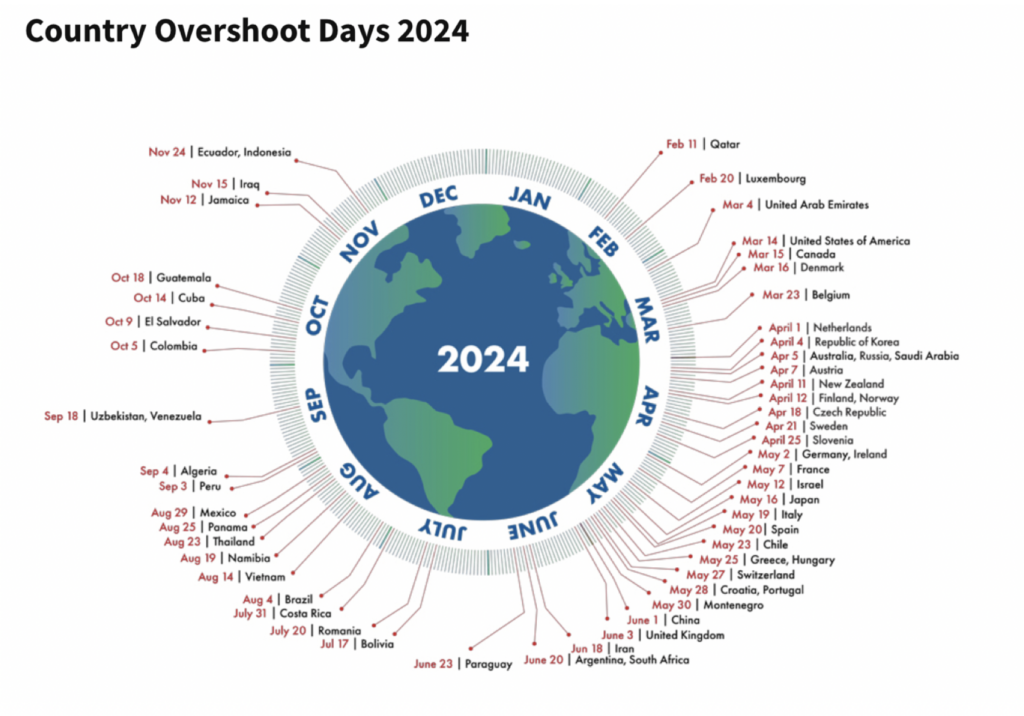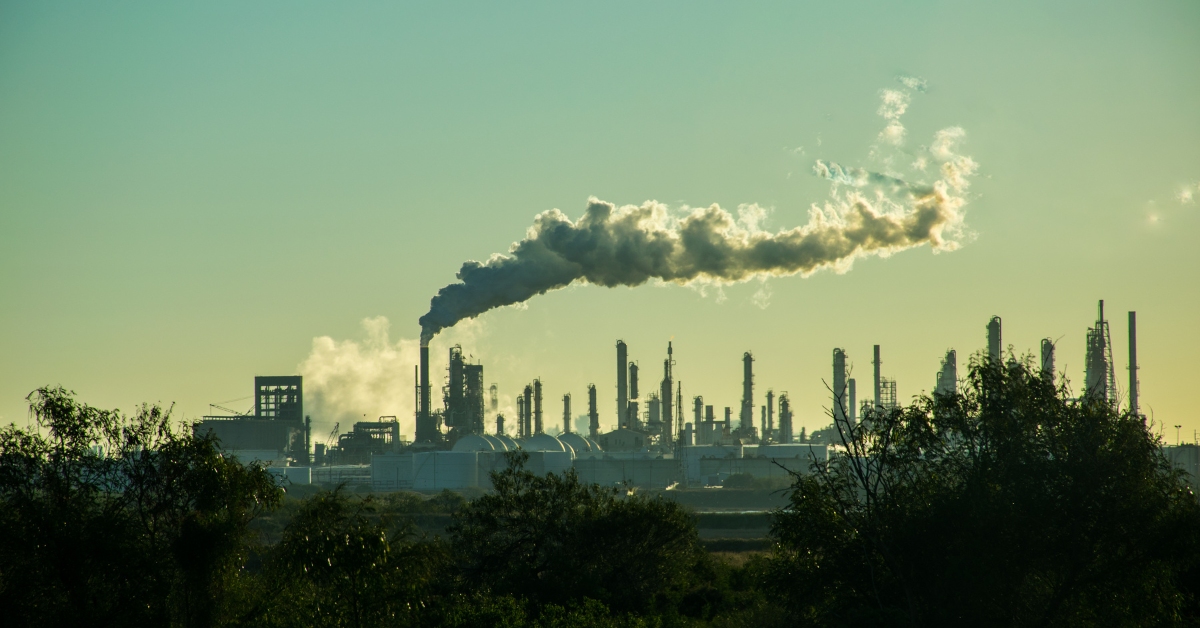It is hard to reconcile climate change and climate denial when you are regularly exposed to new research findings from world-leading climate scientists. But climate change denial still exists, all the way from our social media feeds to the White House. Trying to convince firm deniers is futile. So I look elsewhere for inspiration on climate action, and I have found it in the concept of ‘stabilisation wedges’ – and in The Hague, of all places.
Transcript
One of the features of academic life is being surrounded by world-leading researchers conducting cutting edge research. And the opportunity to interact and have conversations and discussions with those people. They create knowledge that provides important and eye-opening insights into what is happening right now in the world around. This also makes listening to deniers and those who want to discredit research and silence researchers – as I discussed in my podcast two weeks ago – very difficult, particularly conspiracy theories about scientists ‘artificially creating climate change to help fund their research’ which is a real thing, believe it or not.
I am reminded of this because over the summer holidays I was drawn into a series of social media posts from someone who – to my surprise – was sharing statements from climate deniers online and rubbishing the science. There were several lines of argument that were being put forward. They included the argument that climate science is an industry that has been developed from the imaginations of clever academics to get funding for bogus research, and that those scientists have built their entire careers on a clever and coordinated hoax. That climate research is a sham, in other words.
A common argument is that New Zealand need not bother because our emissions are a tiny fraction of China’s so what is the point. One video I saw online argued that carbon is the building block of life – and we should therefore not demonise carbon. Rather the more carbon we can produce, the more building blocks we have. And that researchers talking about climate change is bad for the mental health of young people. Against my better judgement, I often can’t resist jumping into these social media threads.
****
By contrast, soon after my return to work I attended two seminars at Griffith University that reminded me of the urgency of our current situation. The seminars were presented by researchers at the absolutely cutting edge of their disciplines.
The first was the Climate, Disasters & Health Showcase hosted in person and online on 29 January at the Griffith South Brisbane campus. This event was organised to highlighting Griffith researchers’ diverse expertise across these critical fields. It included a keynote from Prof. Brendan Mackey. Brendan in the Director of the Climate Action Beacon at Griffith University. He has a PhD in plant ecology from The Australian National University and was a Coordinating Lead Author for the 2022 IPCC 6th Assessment Report on impacts, vulnerability & adaptation.
Brendan presented a short keynote that highlighted some of the challenges we face. He outlined that
82% of Australians accept that climate change is happening but only 15% of Australians think that it is a political priority.
He used temperature as a key indicator health, contrasting individual and global health.
In terms of individual health, 38°C is a healthy core body temperature, 39°C is a sign of illness/poor health and if you turn up at the doctor at 40°C temperature you will be rushed to emergency because 40°C is life threatening.
The global health comparison begins at 0°C. That is zero degrees above healthy pre-industrial temperatures 175 years ago, in 1850AD. Plus 1.1°C above 1850 is illness – and that is what we have got today. Plus 1.5°C is the equivalent of being rushed to emergency.
Currently annual global gross emissions continue to rise. We have not reached peak emissions yet. They continue to go up. To remain within 1.5°C of warming we need to reduce global emissions by 43% of the 2019 baseline by 2030. You would think that this would inspire an urgent response but there continues to be little evidence of any meaningful response.
Under the Paris Agreement countries committed to developing national determined contributions (or NDC) to be aligned with policy actions. Currently total global NDCs, if met, will result in a reduction of only 8.8% by 2030. Far short of the required 43%. Taking account of exemptions for developing countries, NDCs will actually result in an increase of gross emissions of just under 1% (0.8%). Unless things change, by the end of the century we will be on target for 3.0% temperature rise.
This will accelerate extreme weather events and other temperature driven environmental changes. The recent LA fires have been shown to have been 25% more intense and destructive because of human impacts on climate.
Brendan explained that carbon may be a building block of life but this should not be confused with removing carbon from safe and permanent storage (in forests and in the ground), and in doing so overloading the atmosphere and absorbing excessive carbon into the oceans, due to carbon’s greenhouse properties.
****
The second presentation was delivered by Professor Daniel Scott a few days later on 5 February. Dan is a professor of climate science and tourism at the University of Waterloo in Canada. His career has, over the last 25 years, focussed on sustainable tourism and the transition to a low carbon tourism economy. His research extends to adaptation to the complex impacts of climate change. He too has contributed to the IPCC assessment reports.
Dan was in Australia to present a keynote address at the CAUTHE Conference which was hosted in Brisbane on 10-13 February. Unfortunately I was unable to attend the conference because of research commitments in New Zealand that coincided with the conference.
However we did spend five hours together at Felon’s Brewery, under the Story Bridge by the Meanjin Brisbane River, beer tasting and chatting in the afternoon sun, and I did travel down to the Gold Coast on the train with one of my PhD students to listen to the seminar that he presented in advance of the conference.
Dan began by explaining that he has been researching climate and tourism for 25 years and that, during the course of his career, the global temperate has increased by 1°C. The Earth is 1°C warmer than when he started. I started by PhD in 1992. In that year the global average surface temperature was +0.24 °C. In 2023 it was +1.18°C. He then proceeded to outline the impacts of climate change on tourism destinations in Europe, Canada, the Caribbean and elsewhere around the world. He addressed different regions such as coastal destinations – this was three weeks before Tropical Cycle Alfred made landfall on the Gold Coast – and sports events such as the Winter Olympic and Paralympic Games. He also referred to impacts on the health and safety of tourists and, therefore, on international visitor flows which are already changing in response to changing climates and changing risk profiles in destinations that are increasingly vulnerable to extreme heat, wildfires flash flooding and other climate related events.
****
All of this comes as Earth Day 2025 approaches. Each year since 1970, on April 22, more than a billion people celebrate Earth Day to bring attention to the need to protect our planet from things like pollution and deforestation. Taking part in Earth Day activities – like picking up litter and planting trees, is empowering for people who may otherwise feel an overwhelming sense of disillusionment and frustration, if not outright anger, at government inaction.
The theme for Earth Day 2025 is ‘Our Power, Our Planet’ This theme aims to get behind renewable energy, to triple the use of clean energy sources by 2030. Currently some governments are doing much more than others to develop clean, renewable energy grids. Australia is moving forward with solar and wind. New Zealand is blessed with renewable hydro-electric, but the government is intent on trying to justify the case for coal and gas. America, as well know, is going backwards in every sense. But for individuals and businesses, there are endless opportunities to switch to renewable energy sources like solar, wind, hydro, geothermal or biomass. Communicating this message is a key purpose of Earth Day 2025.
Earth Day also draws our attention to the idea of Earth Overshoot. Since 1970 humanity has consumed more of the Earth’s resources than nature can regenerate within the same time frame. So Earth Overshoot Day is a very simple concept – it is the date on the calendar when we have consumed a whole year of nature’s regenerative capacity.
In 1970, Earth’s Overshoot Day was in late December. Last year in 2024 Earth Overshoot Day was 1 August. This means that within the first seven months of this year, had already consumed the entire annual regenerative capacity nature can provide. This is an interesting measure of our collective human demands on nature.
To mark this dubious milestone, last year in July Newsroom published an article titled ‘Earth Overshoot Day shows we must take our boot off nature’s neck’. It acknowledged that in 2024 that Earth Overshoot was August 1. But it also noted that different countries arrived at their own different overshoot dates, based on population and consumption, and this was interesting. So interesting that I include an image of this in the transcript.
The worst countries in the world in terms of consumption per capita were Qatar (11 February) and Luxembourg (20 February). These countries literally took 5-6 weeks to reach the point of unsustainable overconsumption for the entire year. That is as remarkable, as it is shameful. In 2024 Earth Overshoot was achieved in March – just 8-12 weeks into the year – by five countries the UAE, the USA, Canada, Denmark and Belgium.
Not far behind, last year, New Zealand’s Earth Overshoot Day – April 11 – was almost four months earlier than the global average and a whisker under eight months from where we need it to be – 31 December at midnight. This really is shameful for a country that makes grand ‘100% Pure’ and ‘clean and green’ claims and a small country that should be able to show leadership on the world stage. But we lack a government that is willing or able to look past immediate and shallow short-term economic growth. We may not be the worst offender in the world in terms of contributing to the destruction of the biosphere, but we are among the top contenders and keeping bad company.

As noted in the Newsroom article, “nature functions as a holistic, highly interdependent, self-regulating, and self-regenerating system. We don’t pay for nature’s services. We take critical ecosystem services for granted, despite the enormous value they provide. But we do pay from them when our daily lives are severely impacted”, as in the case of Cyclone Gabrielle in New Zealand and Cyclone Alfred in Australia. Only then to we take notice and realise that disruption of the biosphere is already costing us dearly in economic terms – a point conveniently overlooked and ignored by governments that maintain a narrow focus on economic growth.
****
So how to remain optimistic and address the challenges we face? It is hard to ignore those who seek to actively deny the climate science, and who deliberately sow seeds of doubt and suspicion. Those people are difficult or impossible to convince. So we have to be realistic and pragmatic.
This discussion leads me to mention two related things that occurred recently. First, this week we had a paper published in the Journal of Sustainable Tourism, titled ‘On all fronts: How to end aviation exceptionalism’. This paper – which was led by my Otago colleague James Maclaurin, Emiritus Professor of Philosophy – tackles the wicked problem of global aviation emissions. It takes an ‘on-all-fronts’ approach and, in doing so, adopts the concept of stabilization wedges (Pacala & Socolow 2004).
The stabilization wedges approach envisions a path to climate stability based on the simultaneous pursuit of many emission reduction efforts, all of them based on existing technology and none of them individually necessary or individually sufficient to produce adequate mitigation.
The idea is that in terms of carbon mitigation, even intractable domains – such as aviation emissions – can be addressed without heroic assumptions if we take an on-all-fronts approach. Following this model, we should look for combinations of efforts that amount to an on-all-fronts campaign to reach a new equilibrium.
These ‘wedges’ of contribution to reducing emissions can span the supply and demand sides of consumption; include government, civil society, and corporate initiatives; and encompass local, national, regional, and global scopes of effort. The link to the open access article is provided at the end of the transcript.
****
And the other interesting thing that happened to me recently- I was invited to review and consider supporting an expert statement that had been prepared in support of the decision made by the City Council of The Hague to ban all fossil fuel advertisements from public spaces. The ban defines fossil advertisements as “advertising about fossil fuel products and services, holidays involving air travel, flight tickets, fossil electricity contracts, cruise travel, or cars with a fossil or hybrid engine”
The statement noted that this decision is fully aligned with the recommendations of different, leading scientific bodies in the Netherlands including the Council for the Environment and Infrastructure, the Scientific Climate Council and the Netherlands Environmental Assessment Agency. Each of these scientific bodies have independently advised the Government of the Netherlands to implement a ban on advertisements for carbon-intensive products.
****
To this end, in September last year The Guardian reported that The Hague had became the first city in the world to pass a law banning advertisements promoting fossil fuel products. It reported that this new legislation brings an end to publicly and privately funded advertising for petrol and diesel, aviation and cruise ships in the streets of the Dutch city, including on billboards and bus shelters. This new law took effect almost immediately, from the start of 2025.
This is a world-first. It is the first time a city has banned high-carbon advertising through local legislation. The decision follows a call by the UN chief, António Guterres earlier this year for governments and media to enact such bans, as they have done with other products that are damaging to human health such as tobacco.
This is a classic example of a stabilisation wedge. The Hague’s ban took two years to pass but now is legally binding. Advertising high carbon products undermines climate policy because it normalises and promotes unsustainable behaviours that lead to over consumption of products that destroy the climate. There is no doubt that it takes courage to tackle the climate crisis. Industry interests we know can be very hostile towards such efforts.
Where federal or national government have failed, some cities have already tried to limit the reach of high-carbon products and services through climate emergency declarations, local emissions measurement, council decarbonisation plans, council motions and voluntary agreements. But banning fossil fuel ads is a major step forward.
And now other city authorities are following. The Hague’s legislation is seen as a potential catalyst for similar campaigns elsewhere. Amsterdam has previously imposed bans on products that contribute to climate breakdown, including meat, although they have not passed them into law. Edinburgh Council has agreed to ban advertising for fossil fuel companies, airlines, airports, fossil fuel-powered cars, cruise ships and arms on council-owned advertising spaces. Companies selling these products will also no longer be able to sponsor events or other partnerships in Scotland’s capital.
These are examples of stablisation wedges that amount to an ‘on-all-fronts’ campaign to reach a new equilibrium. Though we do not live in the ideal world, we can orient ourselves towards it, coordinating our various ‘wedges’ of activity as best as we can to achieve something better than the status quo. These examples should inspire us to think about our own possibilities to advance a ‘stabilisation wedges’ approach, so that we can contribute to positive change – one small step at a time. And one city at a time – as in the case of The Hague.
References
The Guardian (Netherlands) (2024). The Hague becomes world’s first city to pass law banning fossil fuel-related ads. 14 September 2024. https://www.theguardian.com/world/2024/sep/13/the-hague-becomes-worlds-first-city-to-ban-fossil-fuel-related-ads
Maclaurin, J., Ellis, E. & Higham, J.E.S. (2025). On all fronts: How to end aviation exceptionalism. Journal of Sustainable Tourism. https://doi.org/10.1080/09669582.2025.2475906
Newsroom (2024). Earth Overshoot Day shows we must take our boot off nature’s neck. 31 July 2024. https://newsroom.co.nz/2024/07/31/earth-overshoot-day-shows-we-must-take-our-boot-off-natures-neck/
Pacala, S., & Socolow, R. (2004). Stabilization wedges: Solving the climate problem for the next 50 years with current technologies. Science, 305(5686), 968-972.








